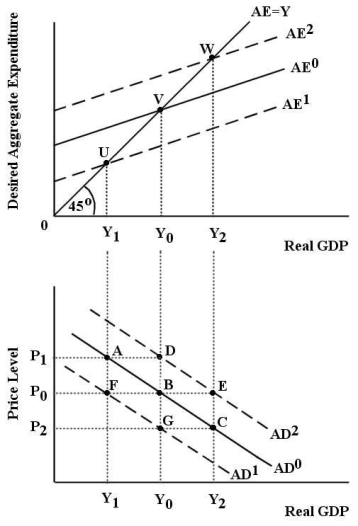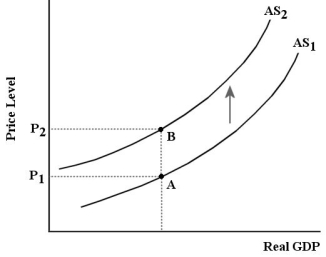Exam 23: Output and Prices in the Short Run
Exam 1: Economic Issues and Concepts130 Questions
Exam 2: Economic Theories,Data,and Graphs140 Questions
Exam 3: Demand, Supply, and Price161 Questions
Exam 4: Elasticity160 Questions
Exam 5: Price Controls and Market Efficiency125 Questions
Exam 6: Consumer Behaviour140 Questions
Exam 7: Producers in the Short Run144 Questions
Exam 8: Producers in the Long Run141 Questions
Exam 9: Competitive Markets154 Questions
Exam 10: Monopoly, cartels, and Price Discrimination126 Questions
Exam 11: Imperfect Competition and Strategic Behaviour126 Questions
Exam 12: Economic Efficiency and Public Policy123 Questions
Exam 13: How Factor Markets Work123 Questions
Exam 14: Labour Markets and Income Inequality119 Questions
Exam 15: Interest Rates and the Capital Market107 Questions
Exam 16: Market Failures and Government Intervention123 Questions
Exam 17: The Economics of Environmental Protection133 Questions
Exam 18: Taxation and Public Expenditure121 Questions
Exam 19: What Macroeconomics Is All About116 Questions
Exam 20: The Measurement of National Income117 Questions
Exam 21: The Simplest Short-Run Macro Model156 Questions
Exam 22: Adding Government and Trade to the Simple Macro Model132 Questions
Exam 23: Output and Prices in the Short Run142 Questions
Exam 24: From the Short Run to the Long Run: The Adjustment of Factor Prices149 Questions
Exam 25: Long-Run Economic Growth129 Questions
Exam 26: Money and Banking129 Questions
Exam 27: Money, Interest Rates, and Economic Activity135 Questions
Exam 28: Monetary Policy in Canada119 Questions
Exam 29: Inflation and Disinflation122 Questions
Exam 30: Unemployment Fluctuations and the Nairu120 Questions
Exam 31: Government Debt and Deficits129 Questions
Exam 32: The Gains From International Trade127 Questions
Exam 33: Trade Policy126 Questions
Exam 34: Exchange Rates and the Balance of Payments161 Questions
Select questions type
Other things being equal,a fall in the domestic price level leads to a rise in private-sector wealth and thus
(Multiple Choice)
4.8/5  (35)
(35)
Consider the basic AD/AS model.A rise in an input price like the wage rate would be expected to create a new macroeconomic equilibrium,which in comparison to the original equilibrium,has a price level that is
(Multiple Choice)
4.7/5  (27)
(27)
The AD curve relates the price level to which of the following?
(Multiple Choice)
4.9/5  (33)
(33)
Suppose the government embarks on an infrastructure program,spending $8 billion on the construction of new roads and bridges.What is the size of the multiplier if the AS curve is vertical?
(Multiple Choice)
4.8/5  (43)
(43)
The economy's aggregate supply (AS)curve shows the relationship between the
(Multiple Choice)
4.8/5  (29)
(29)
If the economy's AS curve is upward sloping,a positive aggregate demand shock will result in
(Multiple Choice)
4.9/5  (37)
(37)
Consider two economies,A and B.Economy A has a marginal propensity to consume of 0.9,a net tax rate of 0.3 and a marginal propensity to import of 0.3.Economy B has a marginal propensity to consume of 0.9,a net tax rate of 0.1 and a marginal propensity to import of 0.3.Suppose there is an increase in autonomous investment of $5 billion in each of these economies.Which of the following statements is true?
(Multiple Choice)
4.8/5  (30)
(30)
A rightward shift in the aggregate demand (AD)curve could result from a rise in
(Multiple Choice)
4.8/5  (39)
(39)
Consider the basic AD/AS macro model.The simple multiplier is reflected by the
(Multiple Choice)
5.0/5  (36)
(36)
Consider the nature of macroeconomic equilibrium.If,at a particular price level,the total output demanded is greater than that supplied by producers,then
(Multiple Choice)
4.9/5  (32)
(32)
 FIGURE 23-1
-Refer to Figure 23-1.Assume the economy is initially in equilibrium with desired aggregate expenditure equal to real GDP at point V.The price level is
FIGURE 23-1
-Refer to Figure 23-1.Assume the economy is initially in equilibrium with desired aggregate expenditure equal to real GDP at point V.The price level is  .The corresponding point on the aggregate demand curve is point
.The corresponding point on the aggregate demand curve is point
(Multiple Choice)
4.9/5  (38)
(38)
If the economy's AS curve is vertical,the multiplier in the AD/AS model is
(Multiple Choice)
4.9/5  (43)
(43)
Aggregate supply shocks cause the price level and real GDP to change in
(Multiple Choice)
4.7/5  (33)
(33)
Aggregate demand (AD)shocks have a smaller effect on real GDP and a larger effect on the price level
(Multiple Choice)
4.8/5  (28)
(28)
Other things being equal,a rise in the price level will imply ________ in wealth for the bondholder and ________ in the wealth of the issuer of the bond.
(Multiple Choice)
4.9/5  (29)
(29)
Which of the following would likely cause a downward parallel shift in the AE curve and a leftward shift in the AD curve?
(Multiple Choice)
4.8/5  (31)
(31)
Consider the AD/AS model.An increase in government purchases will have no impact on equilibrium real GDP if
(Multiple Choice)
4.9/5  (29)
(29)
Other things being equal,as the price level falls exogenously,the aggregate expenditure (AE)function shifts
(Multiple Choice)
4.9/5  (44)
(44)
 FIGURE 23-2
-Refer to Figure 23-2.Which of the following events could cause the upward shift of the AS curve?
FIGURE 23-2
-Refer to Figure 23-2.Which of the following events could cause the upward shift of the AS curve?
(Multiple Choice)
4.8/5  (32)
(32)
Showing 81 - 100 of 142
Filters
- Essay(0)
- Multiple Choice(0)
- Short Answer(0)
- True False(0)
- Matching(0)